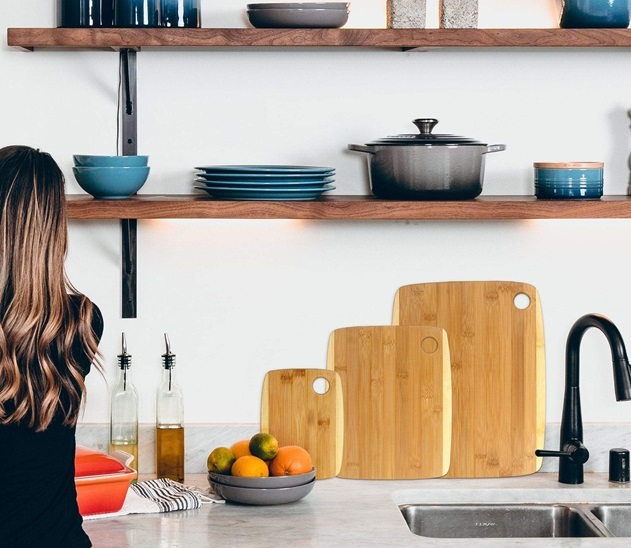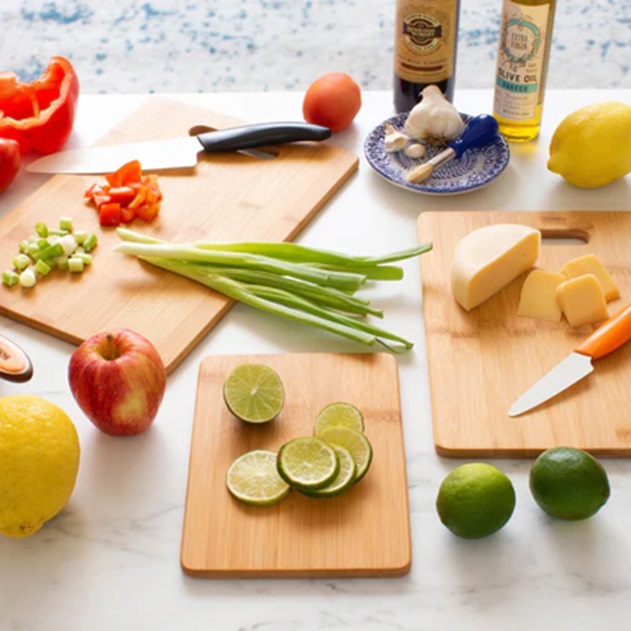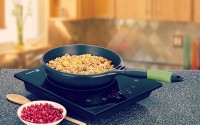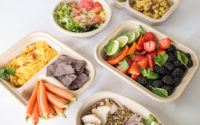Food Safety: What is the Ideal Cutting Board to Use?
Whether you’re an aspiring home cook or you are already a pro in the kitchen, having the essential kitchenware will ease your job and help you discover a whole new world for you. Speaking of essential kitchenware and cooking, cutting boards are the winners without a doubt.
Just like knives, they are a must-have for cutting and prepping food. However, keeping them clean is mandatory for our health regardless of their type. Having clean and separate chopping boards for meat, fruit and veggies is essential to avoid cross contamination and food poisoning. But before choosing the first ones you see available on the market, first you should look for the right type.
The Most Common Types of Cutting Boards

Wood
Wood is one of the most commonly used materials for many things, especially cutting boards. It is a natural material which makes kitchen cutting boards the perfect choice for both professional chefs and aspiring cooks. Truth be told, these strong and durable kitchen cutting boards don’t compromise on aesthetics either. Even though sanitising them is paramount, practice shows that wooden boards for cutting also have their own and natural sanitary features which is another reason why they are the most common choice by chefs as well.
These boards also come in different grains which significantly affects their appearance. Furthermore, they come in various types of wood out of which bamboo, accoya and maple seem to be the ideal ones for the purpose. The biggest downsides of these boards though is their weight, however, this isn’t an obstacle for people not to choose them.
Plastic
Plastic isn’t as popular as wood since this material is porous, synthetic and prone to scratches which allows bacteria to grow easily and faster. The main reason for the common use of plastic boards in the kitchen is their light weight and portability. However, since they are prone to scratches and faster bacteria spread, this fact makes them the worst choice for cutting meat on them. They are best for being used for cutting dry food like bread, some crackers, etc.
Rubber
Even though not that commonly used, still, it isn’t strange finding rubber boards in stores. They are known for their non-porosity which makes it almost impossible for bacteria to hide and grow in them. These boards can be resurfaced and tossed in the dishwasher, making it easier to clean them. Even though heavier in weight just like wood, rubber makes cutting and slicing on it extremely difficult.
What Is the Most Sanitary Type of Cutting Board?
When it comes to choosing the most sanitary type for your needs, it seems that wooden boards are the winner since they have the ability to trap bacteria inside them and kill it which isn’t the case with plastic, rubber and even bamboo. Even though bamboo is a type of wood, still, it doesn’t have the same ability as maple and accoya wood, for instance.
However, if appearance or weight is something that matters to you, you can invest in the other types of boards, of course, however, you really should put a lot of effort in keeping them clean all the time. But even if you do that, it would be mandatory to change them more frequently and buy new ones because of their ability to allow bacteria growth.
What Are the Ways to Keep It Clean All the Time?

Cleaning a kitchen board of this kind isn’t difficult at all, the only thing you need to do though is to clean it on a regular basis. For those times when the board isn’t that dirty, you can simply clean it with hot water and soap. However, when there are traces of food or stains on it, you should use an abrasive sponge. Cleaning a cutting board is super easy, all it takes is to follow some of these simple steps.
Rinse the board under water, and they apply several drops of dish soap on the board. Gently start scrubbing the surface and for any stains and dirt, using a sponge or a special scrubbing brush to remove everything. Make sure to brush gently and evenly to be sure that you will get rid of everything.
When done, rinse everything under hot water and dry the board with a clean cotton kitchen towel. It is mandatory to leave the board vertically because if you lay it flat (the wooden in particular, such as the bamboo ones), any excess moisture there is will go into the board itself and this isn’t good.
If you want to be sure that you have cleaned the board truly and there are no germs or bacteria on it, you can wipe it down with vinegar or lemon and salt. That way, you can remove harmful germs that can lead to listeria, salmonella, Escherichia Coli, etc.



